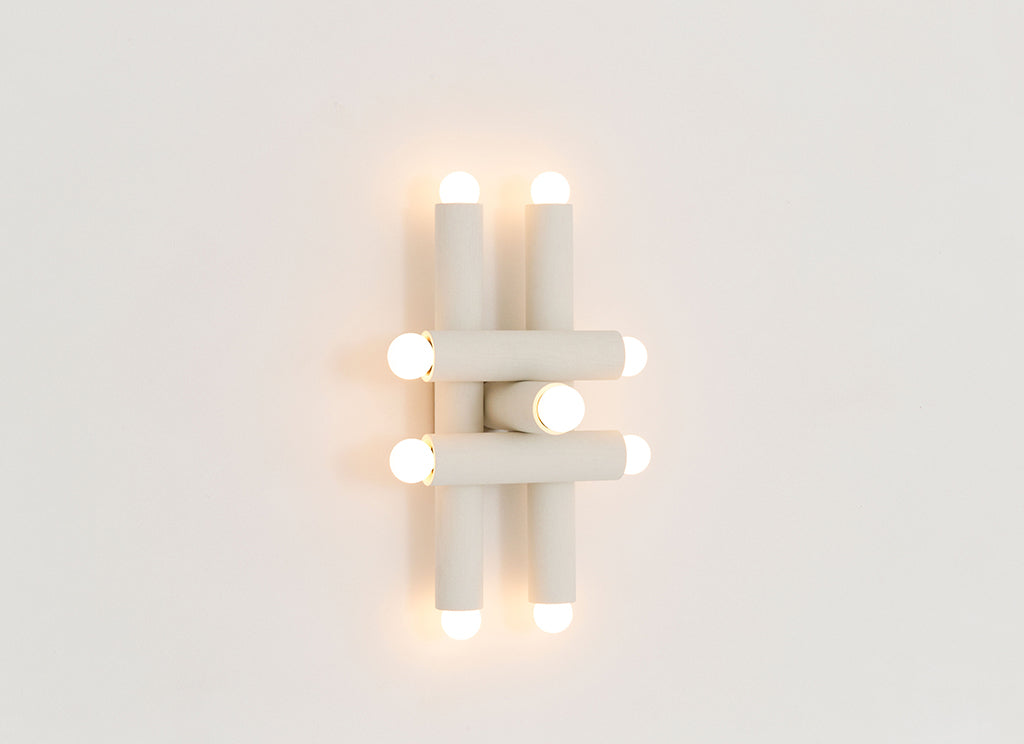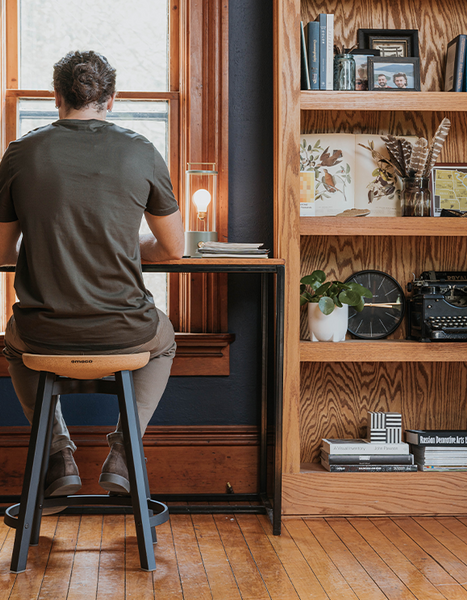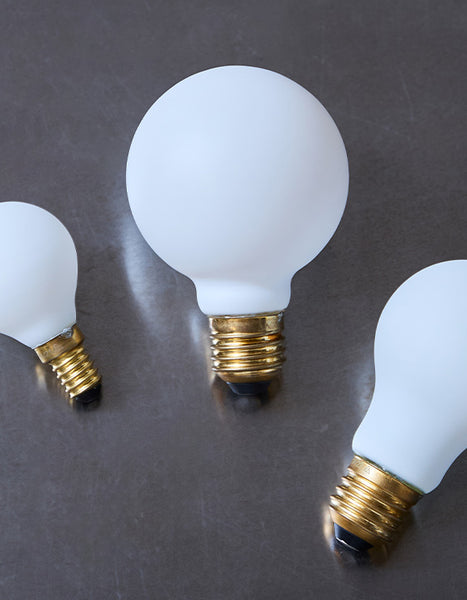At Work With: Robert Highsmith, WORKSTEAD

Native to New York City, Workstead was founded by Stefanie Brechbuehler, Ryan Mahoney and Robert Highsmith with the aim of delivering one-of-a-kind products and projects that have a positive impact on their clients and their community.
Celebrating their 10-year anniversary in 2020, Workstead recently launched their Hieroglyph collection, with Tala bulbs central to the design.
We sat down with founder Robert Highsmith to understand what drives their highly detailed approach, his background in music and how the home can impact creativity at work.
WORKSTEAD encompasses a multitude of disciplines from creative direction, bespoke and commercial products, and interior design. Was this an organic process, or was it your vision from the beginning?
This was our vision from the beginning. My wife and co-founder Stefanie Brechbuehler worked with Michael Graves in Princeton as his Head of Interiors, and was inspired by his multi-faceted studio incorporating products, interiors, and architecture. This model was always in our minds in the early stages of our company’s development. All 3 partners attended Rhode Island School of Design, which is known for placing an emphasis on design across all scales, so the desire to produce a holistic body of work was always with us.
Prior to founding Workstead, you achieved a Masters degree in Architecture as well as 15 years of formal training in music. How did these two creative disciplines prepare and influence you for your work now?
My Architecture Degree Program incorporated a process that was both intuitive and rigorous. That balance between the emotional side of design and the technical has greatly influenced my own personal approach to design. My training in Music also taught me to be disciplined and iterative from an early age. I was attracted to architecture and the design of buildings and objects in part because of the desire to create something more lasting.
Not only that but, you and your partner Stefanie recently moved from a small home to a larger, historic property. How has this shift in landscape influenced your creative processes, and how important was the choice of light in the design of the space?
We find ourselves, through the pandemic, experimenting with a more emotional palette. For example, we’re currently playing with wallpaper for the first time. In terms of lighting, our new home has a very historic hearth, and we designed the recently launched ORBIT CHANDELIER to brighten this very dark space – and then shot the fixture on-site. We also photographed HIEROGLYPH inside a primitive potting shed on the property. So, we’re having fun exploring some of the more rustic elements of our new home, and finding creative ways to incorporate our fixtures in unexpected areas.

Behind the scenes from the homegrown HIEROGLYPH shoot
What inspired the new Hieroglyph collection, and what does Tala bring to the collaboration?
HIEROGLYPH is composed of nested wood cylinders – the foundational elements of our popular and versatile LODGE collection, and is available as a SCONCE or PENDANT. The 9-bulb fixture makes a striking luminous statement, referencing essential abstract forms of the De Stijl movement, as well as the figurative language from which it takes its name. The Tala G50 really brings a material poetry to these pieces. The pairing is especially striking in the Painted White finish – the bulbs’ soft light elevates the subtle hue and grain of the fixture in a highly impactful way.



Featured products: Orbital Chandelier, Hieroglyph Pendant, Hieroglyph Sconce
What would you say are the three building blocks for a well-designed interior product?
A well-designed interior product must have a graphic sensibility, material quality, and produce, reflect, or absorb light in a way that amplifies its surroundings.
How does light – natural and artificial – influence the way in which you select objects and curate spaces?
We often think about the silhouette and the mass of objects. Our work balances a recollection of history alongside a modern desire to create something elemental. Natural light is very important to us in the programming of all of our spaces; but we also find that artificial light, when done well, also provides an element of magic that can be so specific to today. Our collections have always incorporated exposed, reflected, or concealed bulbs and it’s important to us that the quality of light from those bulbs casts a warm and dynamic glow. We know how much the colour temperature of a light source can influence the way a room feels. In short – bad artificial light can really kill a space. Our fixtures are designed to be more in keeping with how natural light enhances an interior.
We have all faced a number of challenges this year, as a business how have you reacted and responded?
We are fortunate that our manufacturing team is in NY and while we faced a shutdown this Spring, we are now able to safely produce fixtures again. With more time spent in our homes than ever before, the home has taken on a new significance. We are seeing a lot of interest in our products right now, as homeowners invest in creating spaces of genuine refuge.
This year Workstead has committed to a monthly launch schedule, with eleven pieces released since January. What brought on the change in approach and what can we expect to see from Workstead in the short, medium- and long-term future?
In celebration of our 10th Anniversary Year, we have launched new product each and every month of 2020-to-date, with plans to continue this new cadence into 2021 and beyond. Our collections have reached a point where we get to enjoy balancing new designs with additions to existing collections. Wall Sconces, which are our most popular fixture type, will continue to be an exciting area of focus as we steadily grow our offerings.
Finally, you’ve lived all over the US. What state or city has had the biggest impact on you as a person and a professional?
Providence, Rhode Island. The city and state are where we all spent many important years of our lives, during our time in the Architecture Program at RISD. For me, having grown up in the American South, Providence was my first chapter spent in New England, an area of the US that appeals to me in so many ways – the landscape, architecture, etc. So we’ve built a studio with offices in both Brooklyn and Upstate New York, in order to have access to both city and country projects, and both ways of life.
Thanks to Robert for speaking with us. Find out more about Workstead at workstead.com



